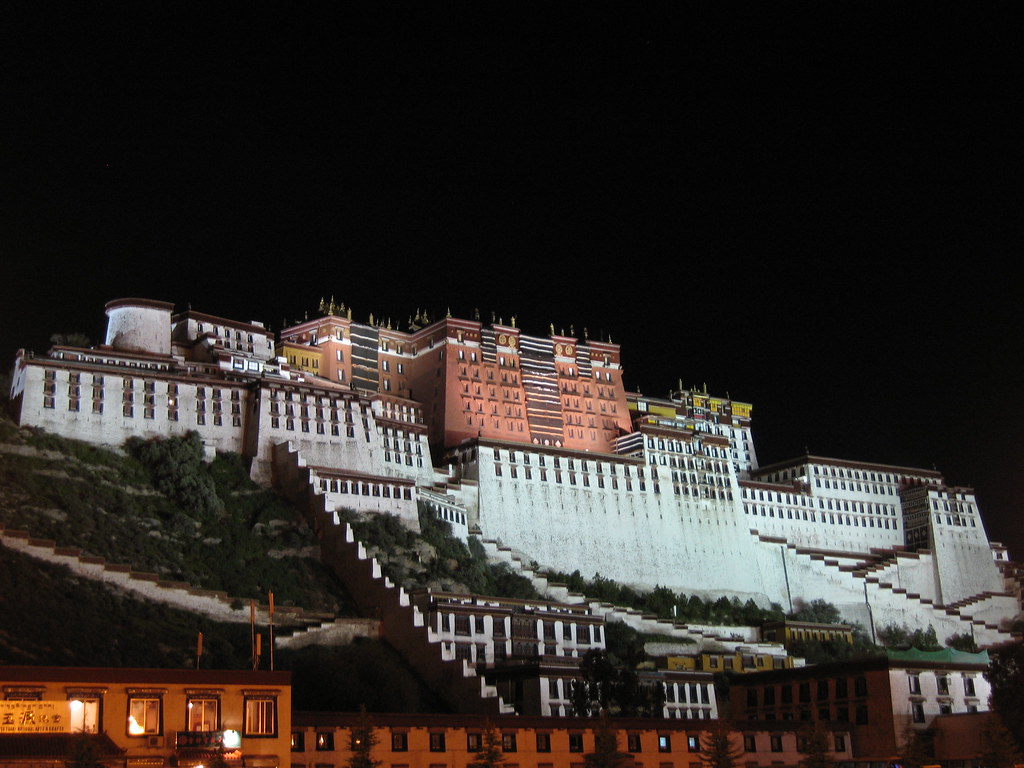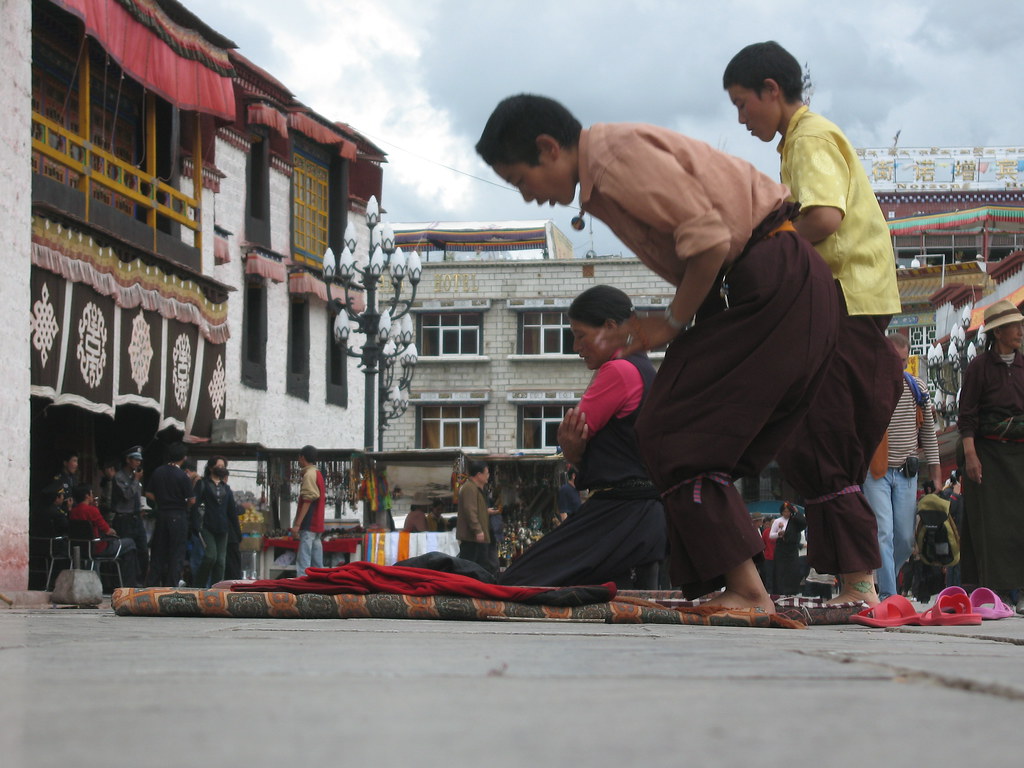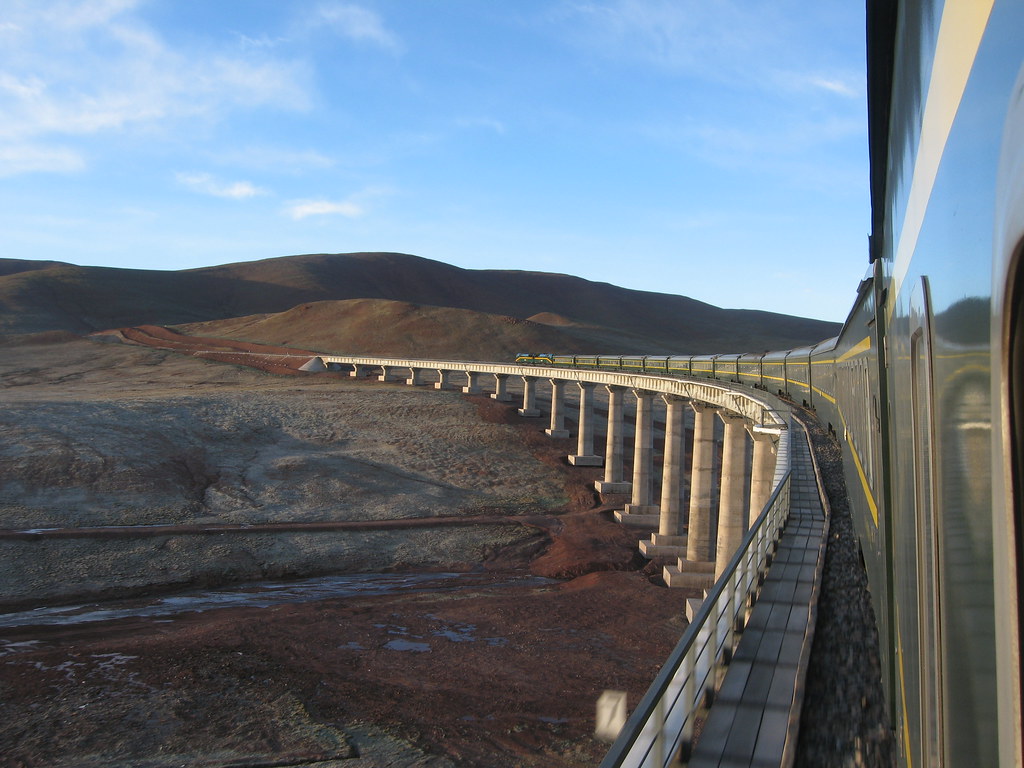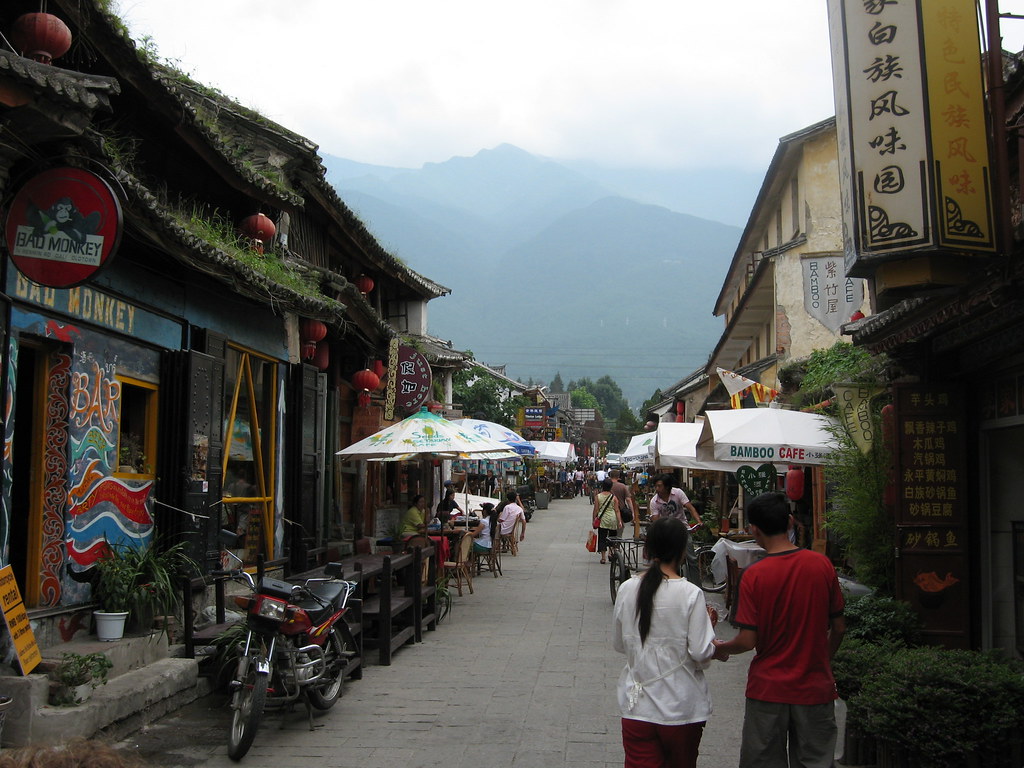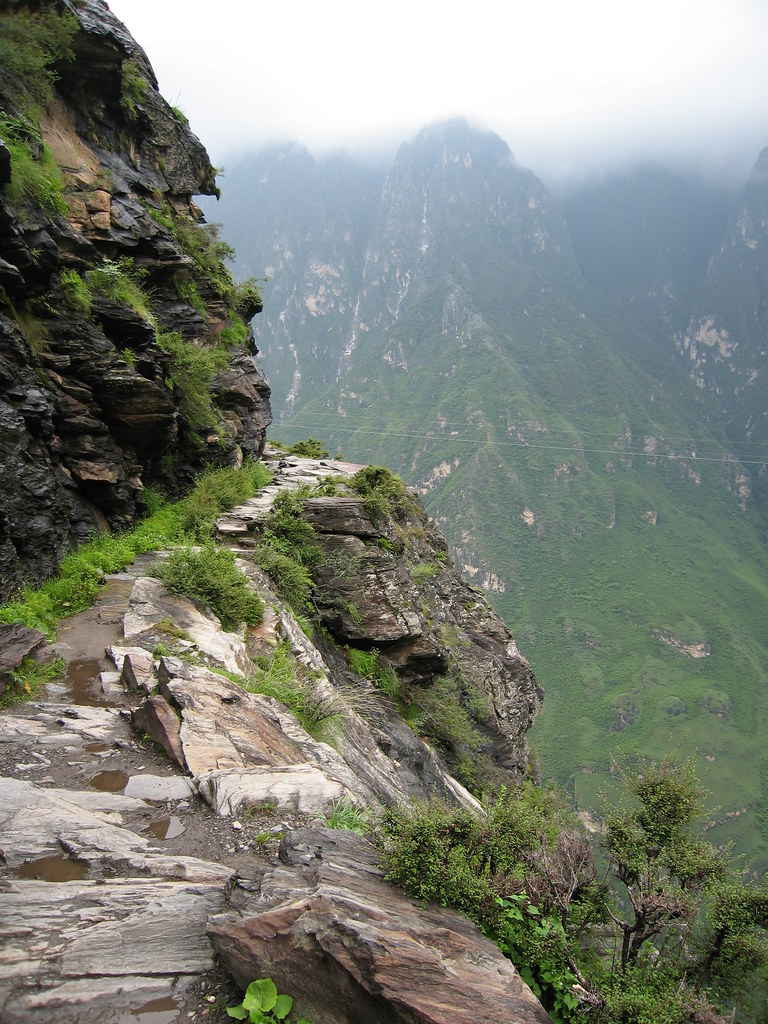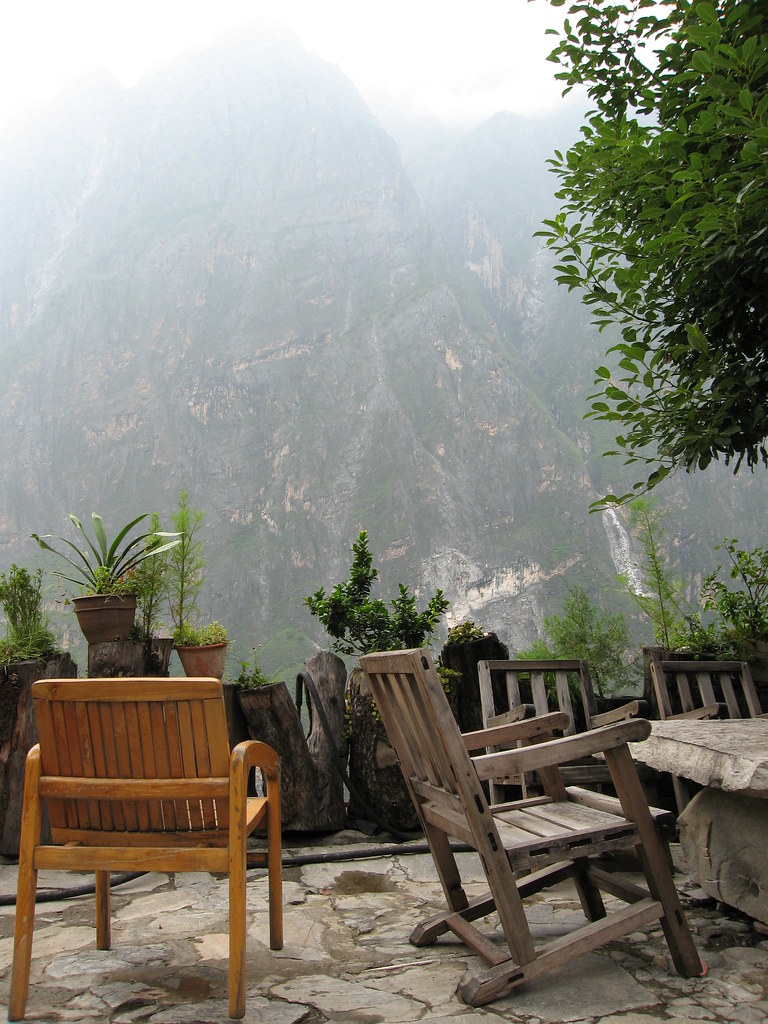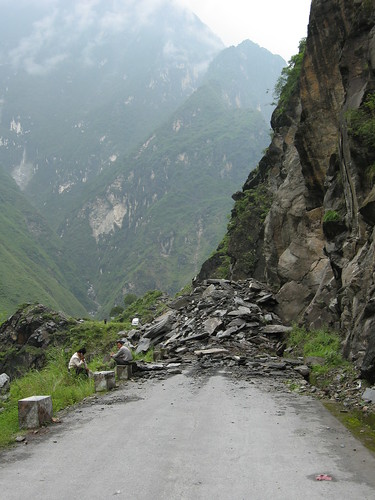
:: A spectacular Tibetan landscape ::
We arrived in Kathmandu almost a month ago but only stopped very briefly before heading off to the Annapurna region. Since then, we've managed to squeeze in 18 days of tough, vegetarian fueled, trekking around the Annapurna circuit and into the Annapurna Sanctuary. Dee's Dad met us along the way and endured the hardship with us - he can vouch for the never ending uphill ascents of the mountains over many long days.
Fitter and a little slimmer now than we've been in a while we stopped back into Kathmandu to enjoy good food that is gradually reverting us back to our former selves....before heading into India where we are now.

So to catch up where we left off in Tibet.....
Our route overland route through to Nepal took us along the scenic Friendship Highway; this highway begins in Lhasa , runs over the Tibetan Plateau and crosses the Nepal border before finally ending in Kathmandu. From our observation there are two popular ways of making the journey, by jeep over five days, or if you're a real thrill seeker, by bicycle over a fortnight.
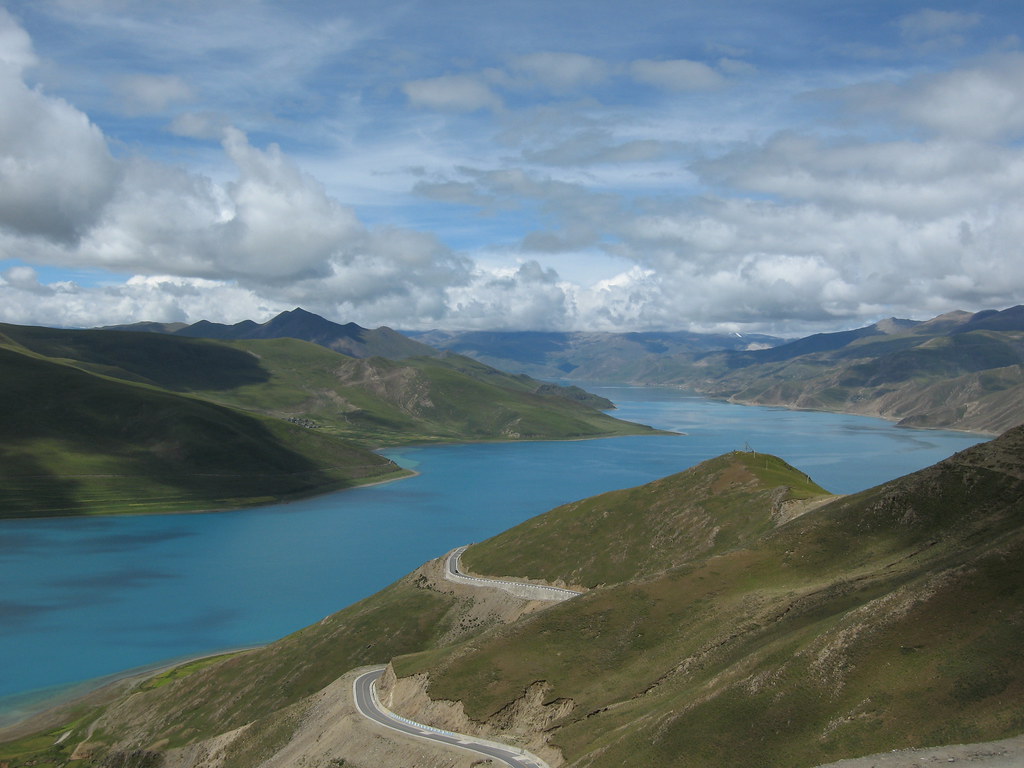
:: Yamdrok Lake ::
Opting for the former we teamed up with Marc and Imma (from Barcelona) and departed Lhasa in our aging Landcruiser. Stops along the way included the turquoise Yamdrok Lake, the fort city of Gyantze and Shigatse, the home of the Panchen Lama and then onto highlights of all highlights Everest Base Camp before dropping down to Zhangmu to cross the border into Nepal.
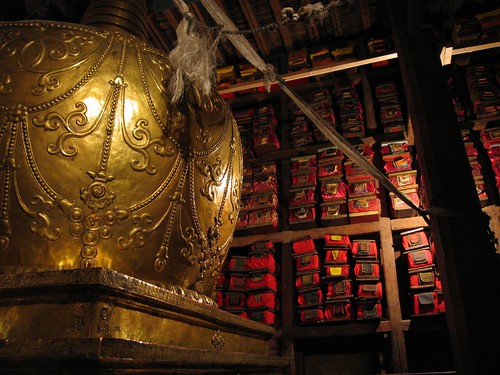
:: Kumbum Monastery - Gyantze ::
Over the course of the five days we admired spectacular snow capped mountains and huge barren plains as we passed through lots of small Tibetan villages. As we climbed higher and higher up into the mountains towards Everest what impressed upon us most was the fact that families live and survive in these areas of desolation and isolation with very little shelter from the hostile elements.
Day 4 brought the highlight of the whole journey.... reaching Everest Base Camp. Blankets of clouds that can envelop the mountain for weeks on end constantly threaten to rob visitors of the overriding reason most people embark on this route. After three very bumpy hours of off road driving which thoroughly tested the full capability of the Land Cruiser we finally reached Rongphu Monastery and proceeded on to the tourist base camp looking disappointingly down the valley to see white clouds occupying the space where Everest should stand imposingly. We could see one small peak but knew that somewhere in the clouds a mountain towered above it. Base Camp for tourists is located at the very end of the road on which vehicles are allowed to travel on. 100 metres of the road either side is lined with big black tent "hotels". We checked in to Hotel California, dumped our bags and started hiking the 6km to the actual Everest Base Camp at 5,200 metres hoping the clouds would lift long enough catch a glimpse of the mountain. Hours of waiting and imagining the clouds were lifting finally came to an end when the sun went down and an icy wind drove us back to tented Hotel California for the night with the hope that morning would bring a clear view.
Before dawn early risers confirmed that heavy cloud completely obliterated any mountain views so there was little point in rushing to get up and out into the cold. As people turned over in their beds to get some more sleep there were sudden excited shouts of "it's clearing" followed by a flurry of activity as people hastily threw on their shoes and ran out with cameras. As we all watched the clouds slowly dissolved revealing a breathtakingly awesome sight as the world's highest mountain majestically imposed her towering form before us.

:: Sunrise touches the Summit ::
These sensational moments and the minutes that followed as the sun came up and gave a Midas golden touch to the summit have become the absolute highlight of our trip. It's hard to put words to the experience and emotion we felt that morning.

:: Mt Everest ::
Rattling along towards the Nepal border later that day we'd all had enough of jeeps. An hour from the border along a stretch of road with a cliff on one side and sheer ravine on the other we encountered Chinese "road works". A fleet of Land Cruisers waited whilst workers laid dynamite into the cliff .... literally put their hands over their ears and blew massive sections of the overhang up showering the road with debris. No such thing as anything being a danger to the general public here. An hour or so later a bulldozer had pushed the massive rock debris over the side of the ravine (almost going in himself in the process) and we were waved on to our final destination of Zhangmu, the last Tibetan stop before the border.

:: Tourist Base Camp ::
The following morning, after a slight delay in which a Chinese border guard questioned the authenticity of Marcus's passport, we left Tibet in a little minibus and drove the 8km down through no man's land to the Nepal border. On crossing the bridge into Nepal there is a marked difference, you're immediately aware that you are in a new country. The new spicy smells and aromas are the first to hit followed by the vibrant colours, decorated buses and hustle of bustle of a new race of people living their daily lives. Clambering on board a bus heading in the Kathmandu direction we settled back to take in Nepal and form our first impressions. It was an eyeopening experience. Firstly all local buses have almost a colourful circus theme, they are adorned in lots of flare in the form of flags, tassels and pieces of material that are draped in the front window of the bus, lots of bells and whistles dance in front of the driver's direct line of vision as he negotiates narrow cliff side roads, hairpin bends and swerves to avoid stray goats and chickens. Over the driver's head there are two vital pieces of electronic equipment. The first is a cassette player which demands attention regularly, at the end of each song a new tune on a new tape is selected by the driver. The second is a horn machine with ten different sounds, depending on the situation, i.e. stopping, pulling out, coming around a bend, mood of the driver an individual horn trumpets a little tune to accompany the circumstance. Between driving and undertaking these tasks the driver is very very distracted.
Sitting up the front we watched as the bus stopped every couple of kilometres to squeeze some more people in until finally there was an overflow to the roof of the bus. We stopped in a small village and waited for twenty minutes as a woman ridiculously loaded fifty big boxes of Chinese whiskey (no exaggeration) in through the back window of the bus. Anyone unfortunate enough to be sitting in the back seats was relocated to the roof. Shortly later we stopped and a ridiculous number of boxes of brandy were added to the cargo. There just doesn't seem to be a ceiling on the amount of goods people are prepared to load onto a public bus. We picked up more and more passengers who squabbled over every available inch of space. At one stage we stopped and a man jumped in the driver's window and sat in beside him. You know a bus is really full when there are two people sitting in the driver's seat!!!
After a long hot day on an underpowered bus painstakingly climbing hill after hill we finally reached the top and freewheeled down into Kathmandu valley - and into rush hour traffic. We stayed in Kathmandu just long enough to pick up some essential trekking supplies before taking another bus to the Annapurna mountains.
 :: Thali Lunch ::
:: Thali Lunch ::




































